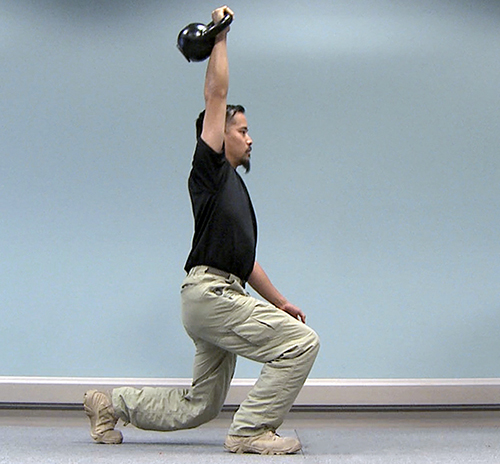Stanford - It Depends
Written by Gray Cook FMS Pod Casts
My recent experience at Stanford was one of the most rewarding and exhausting endeavors I’ve ever confronted. I’ve practiced swings in front of Pavel Tsatsouline, done dry needling under Edo Zylstra and passed an oral anatomy exam at the University of Miami. Each was a trying endeavor that offered great rewards.
Sharing the stage at Stanford with Stu McGill may have topped them all because of the public venue. Stu and I both survived, and I hope we reinforced a friendship in the process. Toward the end of what seemed to be a 40-hour day, we entertained some questions, and it quickly became apparent Stu has a standard answer: “It depends.”

These words are often used to skirt a question, but when a man with Stuart McGill’s pedigree answers “It depends,” it really does depend. I think Stu’s response is a concise way of saying, “Don’t ask me for a specific answer to a general question, because we’re talking about human beings. We’re discussing the time they’re going to invest in either rehabilitation or training. We don’t want to waste anybody’s time and we definitely don’t want to do any harm. When you ask a general question and ‘it depends’ is the answer, there are specific things that haven’t been taken off the table.”
As I heard this answer, I realized the underlying question was, “When can we just coach people?”
We all love the reward of seeing someone move or perform better just because we’re in the room, doing what we do and saying what we say. Our manual, tactile and verbal cues are some of the most artistic things we can ever do. We speak and movement improves—how cool is that?!
I’d like to use four coaches as examples to make this point:
Kelly Starrett, Shannon Turley, Stuart McGill & Dan John.
 |
| Kelly Starrett |
On my way to Stanford, Kelly Starrett picked me up at the San Francisco airport and took me to his gym. I watched his coaches take his ideas and turn them into motion, movement, and respectable lifts.
 |
| Shannon Turley |
Shannon Turley is the Strength and Conditioning Coach for the Stanford football team. We watched him move three groups through his facility. No music. No disrespect. No horseplay and no chatter. The athletes knew their roles and moved smoothly. Shannon, his strength and conditioning staff and the football staff were precise with their commentary and critique.
 |
| Stuart McGill |
On Saturday at Stanford, I observed Stuart McGill. He demonstrated that a spine that screens well doesn’t necessarily test well under load. I completely concur. Screen poorly? We need to work backward with an SFMA and a clinical exam. Screen well? It only means you screened well at bodyweight, not that you lift well or load well. Anything else is an assumption.
 |
| Dan John |
Lastly, I’m always on my game when I have a coach of Dan John’s wisdom and experience in the room. He was on the front row in the Stanford auditorium, fitting the puzzle pieces together, open to new ideas, but standing firm in the things he has witnessed across his career.
Kelly Starrett, Shannon Turley, Stuart McGill and Dan John inspire by their words and example, and represent the best we have in coaching. I aspire to have that kind of coaching wisdom and art, though I don’t necessarily consider that my role.
I was originally exposed to rehabilitation and performance at the same time, and like a child learning English and Spanish, I can easily and effortlessly transfer between each ‘language.’ I simultaneously pushed myself to become a strength coach and a physical therapist, and never formed a singular allegiance to either. This knowledge transfer seems natural to me and makes evident the impact that its absence can have on great coaching.
Good coaches hone their instruction, critique and cues until nearly perfect.
Great coaches intuitively differentiate those athletes ready for coaching and those who probably need to do extra work, remedial work or need a second opinion.
This insight regarding who to coach and who to send down a corrective path
prior to coaching is the entire point of my work in movement screening.

I had an opportunity to sit in the Orthopedic Grand Rounds at the University of Miami School of Medicine, because the Physical Therapy department and the Medical department reviewed orthopedic cases together in a large theatre format. I vividly recall listening to inexperienced clinicians ask specific questions while providing no background information. My professors would answer in patient words much like Stu’s, “You haven’t given me enough information to give you the answer I know will work most often.” Only an irresponsible clinician would answer a medical question without knowing the subject’s basic vital signs, health history and current state of health.
I see the movement screen as vital signs for our work, a starting point detailing
the cooperation (or lack thereof) of mobility and motor control.
Coaching became a major theme of my weekend at Stanford. We’re all attempting to determine when to push people and when to cue and coach motor control. We also need to be able to realize when we can’t induce change.
Can we take somebody with a poor movement screen,‘1s’ and maybe even ‘0s’, and put them in positions where if they brace themselves they can accept load? Absolutely. The gym is full of such people. The athletic arena is full of them. Do we make the situation better by loading it?
The movement screen has a mobility bias, and loaded screens have a stability and motor control bias. I reiterated at Stanford that my statement about ‘mobility first’ is not simply an invitation to stretch or mobilize. You must first explain why mobility is limited or compromised.
Look closely and you will often find that a tight muscle is limiting a movement pattern where motor control or stability is poor. What you choose to do should make it move better. I don’t care whether you work on motor control or mobility, as long as you improve mobility.
Even with a major movement restriction that distorts almost everything else you do, we can always find a few positions where you can still handle load. Great, I’ve turned you into a statue. We want a moving, dynamic and adaptable human being. This is why the patterns of the movement screen are so important: acceptable movement patterns under appropriate loads usually improve, but we must first agree on situational definitions of acceptable and appropriate.
Push mobility into normalcy and realize that if people are moving at close to a
normal level with no inappropriate vital signs, they will respond to coaching.
What type of coaching will they respond to? That is espoused by the coaches I mentioned: Kelly Starrett, Shannon Turley, Stuart McGill and Dan John. These professionals have developed amazing coaching wisdom and continually get wonderful results. Through much experience, they intuitively know who to coach, when to coach and how much load to impose.
If we take their proven coaching methodologies and apply them generally across 30 diverse bodies (different in personality, psychosocial interaction and physical movement patterns), we’re not going to replicate their results. Nothing they do is random and nothing they do is rigid. It is precisely addressed to the situation and it always ‘depends.’
Not content with hearing ‘it depends’ from the best people in the world?
Give them a better question!
First, answer as much as you can, and then ask a focused question. Let them know you took care of the vital signs and took all the things off the table that would impede great coaching. My work has been to make you give us a better question so we can give you a better answer.

I specifically avoided covering the SFMA, our medical movement screening with its complete decision tree on stage. That was not my role. My mission at Stanford was to demonstrate the FMS, its attributes and its limitations, and to detail the benefits of using it as a starting point. Flunk a movement screen due to pain or movement-pattern incompetency, and the best coaching in the world probably won’t help much. Pass a movement screen, undergo further load-focused testing and now you are ready to look at strategies. Test and retest for much-needed feedback on what works.
The four men I mentioned are much more than coaches. Stu is a respected researcher and Kelly is a true innovator. Dan is the athlete and coach with the wisdom of a sage. Shannon has been doing things that look, on the surface, random and non-specific, but his results are impressive. His athletes perform as well as most of the other athletes they compete against, but they move significantly better. He measures often and his program values movement as a biomarker.
In summary, exercise should:
- Add a benefit to your health and performance
- Not impose unnecessary risk factors
- Be coached
- Be programmed
- Yield continual results or provide remarkable maintenance.
If you want a cleaner answer, learn to ask a better question, or accept the very correct ‘it depends.’
Related Resources
-
We Can't Do It Better Than Nature
Posted by Gray Cook
Please login to leave a comment
1 Comments
-
Brenda LaMont 12/18/2014 7:13:46 PM
Great talk! Gray is always so articulate and a joy to learn from!
FMS reveals so much and I love testing people because it uncovers the biggest problem so easily. Sometimes its just their breathing pattern.Another light turns on!Thanks for posting this!





